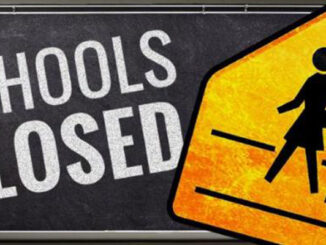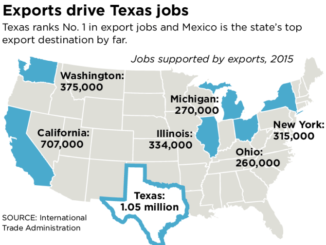
The knowledge economy requires a college degree — forcing high schools to think of graduation not as the goal, but as the starting line.
As recently as the 1950s, a young American armed with a high school diploma and a strong work ethic could set off for a relatively comfortable middle class life with his or her family. The myth of Horatio Alger still lingered – that a young impoverished person could improve his or her economic lot with hard work and good character.
But that myth started to give way to a new reality in the 1960s. A premium started being placed on a college degree, especially as new fields opened up in the worlds of science and technology after Sputnik and the race to the moon. As college became more in demand, the wage gap began to grow between high school graduates and college graduates.
That trend continues today, compromising the economic stability of those citizens with only high school diplomas. These numbers illustrate the point: In 1972, 7% of Americans with a high school education were living in poverty. By 2014, that number had doubled to 14%. Put another way, people with only a high school diploma accounted for 29% of the total U.S. population in 2014 but made up 35% of those living in poverty.
Despite those grim numbers, our K-12 system largely operates as if getting students to high school graduation is the goal. The Los Angeles Unified School District’s new strategic plan, for example, calls for a 100% graduation rate of its students, which, by the way, has never been accomplished in a large urban district.
In 2014-2015, the district’s graduation rate was 72.2%, continuing a recent upward trajectory. Yet in 2014-2015, only 33% of LAUSD students were proficient in math on California’s state assessments and 44% were proficient in reading.
How do we reconcile that gap between academic proficiency and graduation rates? What is a diploma worth if so many students are not mastering core subjects such as math and reading? And what does this gap mean to students, to those in higher education, and, importantly, to employers?
What is a diploma worth if so many students are not mastering core subjects such as math and reading? And what does this gap mean to students, to those in higher education, and, importantly, to employers?
Those are haunting questions given that economic opportunity increases with education attainment, whether that is a technical certificate, two-year degree, or a bachelor’s degree. And they raise another important question:
What must the K-12 system do to help students graduate from high school with more than just a diploma in hand – but also with choices and an understanding of their next steps?
The first answer is accountability, accountability, accountability. We all have a vested interest in understanding the progress of students. None of us, though, has a greater stake in a precise reading than students themselves.
Their futures are compromised when their districts focus on high school graduation rates more than measureable academic achievement and mastery. And by “measureable,” I mean standards and assessments that are backed by research.
True, students may have a chorus of well-meaning adults behind them claiming success. But the kind of gap we see in LAUSD’s scores is a red flag. And LAUSD is by no means the only district in the same situation.
The second answer is making sure students are on the road to becoming adaptable, lifelong learners. The K-12 system must help students succeed over time as technical skills evolve, new jobs and fields are created, and others fade away. That’s the nature of the modern economy.
The 2016 National Association of Colleges and Employers (NACE)survey points to this reality. It found that employers most desire employees with the following attributes: leadership; ability to work in a team structure; ability to make decisions and solve problems; ability to communicate verbally and in writing; ability to plan, organize, and prioritize work; ability to analyze quantitative data; and flexibility.
The basis for many of those attributes is executive function skills, which include working memory, mental flexibility, and self-control. According to the Center on the Developing Child at Harvard University, children are not born with these skills. Instead, they have the potential to develop them, which is an opportunity for the K-12 system.
We all have a vested interest in understanding the progress of students. None of us, though, has a greater stake in a precise reading than students themselves.
Summit Public Schools, a charter management organization in California and Washington State, has embraced this opportunity. The organization intentionally uses projects and teams, personalized learning, and problem-solving practice. Summit schools connect students to peers and mentors so they can graduate not only with a diploma but with true academic and social readiness for their next steps. The strategies pay off, too: Summit graduates complete college within six years at twice the average national rate.
The third answer is to connect rigor with relevance. People stick with something difficult if the end result is meaningful. Students are no different. Their work takes on a clearer focus if they understand their studies are connected to their goals and their lives. Two examples of this can be found in Southern California.
Long Beach Unified School District has embraced Linked Learning as a way to improve the long-term outcomes for their students. The district has combined rigorous academics, workplace-based learning, career technical education, and support services such as tutoring and counseling.
Long Beach Unified has a stable of higher education, business, and community partners who help the district transform the diploma from a certificate of completion to a “passport to opportunity.” The passport includes everything from a technical certificate to a two-year degree to a four-year degree.
An ongoing evaluation of the initiative shows positive preliminary results. The outcomes include increased attendance and more students enrolling in postsecondary education after graduation.
Ednovate Schools, a Los Angeles-based charter management organization with a focus on college preparation, has combined both of these principles in their approach. I know this because I became an advisor to Ednovate while on staff at the University of Southern California’s Rossier School of Education, which incubated the organization.
Ednovate Schools largely educate students who would be the first in their families to attend college and enter the middle class. Their curriculum is aligned to the ACT Career and College Readiness Standards so the schools can track student growth from year-to-year and ensure that students are on track for college. They also can compare their growth to that of other schools, districts, and states.
Ednovate’s model includes helping students to connect their studies to their personal goals in order to create a sense of purpose for their hard work. This detailed approach, called “positive multigenerational change,” helps students know themselves, their community, their nation, and their world over their four years of high school.
Higher education undoubtedly creates access to the middle class, but the K-12 system is the launch pad for postsecondary success and economic opportunity. That pathway starts when districts measure the academic progress of students against meaningful standards, help students plan and prepare for postsecondary success, and make deliberate connections for students to all forms of professional life.
When they do that, school systems infuse high school diplomas with real meaning and value.
Higher education undoubtedly creates access to the middle class, but the K-12 system is the launch pad for postsecondary success and economic opportunity.
Anne Wicks Humphrey is the Director of Education Reform at the George W. Bush Institute.



